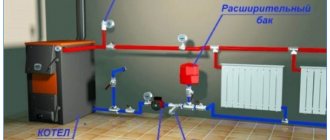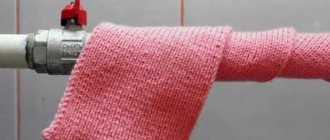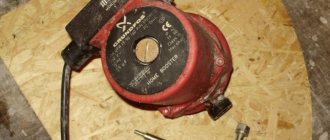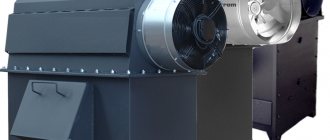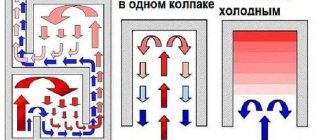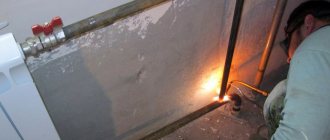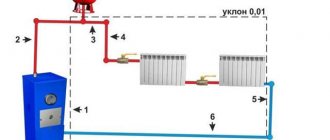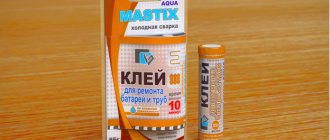In apartment buildings, one of the most common problems with the heating system is leakage of heating batteries; this happens less often in autonomous systems of private houses. Basically, depressurization occurs during hydraulic tests. Weak and worn joints cannot withstand strong pressure and begin to leak water through joints or microcracks in radiator housings.
This can happen in the most harmless situation; residents should always be prepared for such cases. People who have not encountered a similar problem immediately panic, not knowing what actions to take. First, you should place a suitable container under the flowing stream so that water does not spill onto the floor.
Where to call if the heating battery is leaking
If a person lives in an apartment building and the battery begins to leak during the heating season, the responsibility for eliminating the malfunction lies with the management company. Such a case is considered an emergency.
First of all, the resident needs to prevent the possible consequences of a leak. In order to prevent damage to the floor covering or, even worse, to avoid flooding the neighbors below, you need to find dishes to place under the leak. After this, immediately call the management company. The repair team must fix the leak in the heating battery as soon as possible and inspect the entire system in the apartment.
You can find out the phone number of the management company from your neighbors by studying the information on the walls of the entrance, in receipts, in the contract for the provision of services (for example, intercom service) or in online directories (for example, reformagkh.ru).
The most common problems and their symptoms
Although cast iron perfectly tolerates the imperfections of the central heating coolant, and the radiators made from it have wide enough channels so that debris does not accumulate in them, problems can arise even with them. And this despite the fact that there is no wear to this metal. The following factors may be to blame for a cast iron battery bursting or a fistula appearing in its walls:
- Everyone knows the heavy weight of radiators made of this metal. If during installation of the structure, insufficiently strong brackets were used, or there were not enough of them, over time it may sag under its own weight and tilt. Even a slight deviation of just a couple of millimeters will reduce the efficiency of the device, and if the distortion is not corrected, then after a few years corrosion will appear in the place where the coolant is missing. At first it will look like a small brown spot, which will grow with each heating season until a fistula forms in its place.
- The reputation of “long-living” is characteristic of both old and new models of cast iron radiators, but provided that they are installed in the contour of an apartment building no higher than six floors. If the heating network is reliable and does not suffer from strong water hammer, then they can be installed in nine-story buildings. Otherwise, under strong water pressure, the cast iron battery may leak at the joints of the sections. In the event that a cast iron battery leaks during the heating season, you need to know in advance how to repair it. Today there are a lot of sealants that will help the device “hold out” until warm days.
- The internal structure of domestic batteries is such that the cast iron from which they are made has roughness that is completely absent in imported analogues. That is why a lot of debris is deposited on the walls over time, which fills the water in the heating network. Suspensions, particles of rust and metals, all settle and make the wide channel so narrow that it is no longer able to easily pass coolant under high pressure. In this case, the structure may burst anywhere, and then you will have to urgently decide how to eliminate the leak in the cast iron battery.
- Gaskets and nipple threads are the weak “link” of heating devices. If cast iron does not have a statute of limitations, then the same cannot be said about the parts that make up the battery. In order not to lead the situation to the point where repair of the cast iron battery is required, the connections must be checked after each heating season and the gaskets on them must be periodically changed.
As practice shows, most often it becomes known that something is wrong with the heating system when repair of cast iron radiators is already required. To find out about a problem in advance, you need to listen for “help signals” that indicate the presence of defects.
Reasons why depressurization occurs
Leakage problems in heating systems do not arise on their own. In each case, shortcomings are revealed that led to sad consequences.
The most common causes of leaks in the heating system:
- Exposure to external factors (impact or attempt to move the battery using force, for example, during apartment renovation).
- Manufacturing defects.
- Violation of technology during system installation.
- Radiator wear and tear over time.
- Exceeding the permissible level of water pressure in the heating system.
If the cause of depressurization is associated with an excessive increase in pressure, responsibility for the malfunction of the system lies with the management company, which is called upon to monitor the normal level of water pressure in the general heating system.
If it is possible to shut off the coolant supply to your apartment, this must be done during testing and startup of the system at the beginning of the heating season.
Types of welding
All products belonging to this type are divided into plastic and fluid. The latter are necessarily two-component mixtures - one bottle contains epoxy resin with additives, the second contains a hardener. Plastic masses are sold in tubes, bottles, jars; they can be used to coat a pipe or radiator without dilution. The mass looks like plasticine, consisting of two blocks that need to be mixed together by kneading with your fingers. It is possible to separate a small piece of the mass and save the rest until the next need.
Cases in which you can fix a pressure leak without draining the water
If a minor water leak occurs in a private home, you should use one of the appropriate methods to eliminate the leak without draining the water and reducing the pressure. The same applies to an apartment, if the accident does not cause difficulties.
Before you get to work, you need to make sure that the water in the radiator is not very hot. Otherwise, you may suffer serious burns.
No special equipment is required to eliminate minor accidents. The most suitable chemical materials that can stop leaks include various sealants used in automobile engine repair (BBF Super, Liqui Moly Kuhler Dichter). They are able to withstand high temperatures and withstand high pressure. A leak in a straight pipe should be stopped using sealant in the following order:
- Apply sealant to durable cloth.
- Wrap the fabric tightly around the pipe.
- Secure the bandage with clamps, wire or rope.
Wider clamps can also be used, but they are harder to find.
At high temperatures, the sealant hardens quickly and retains its properties for a long time even at high water pressure. In addition to sealants, compositions based on epoxy resin are used to eliminate leaks.
If a metal pipe is leaking, it is customary to use rubber-based materials. Such compositions are also able to withstand high temperatures and are used to seal leaks without draining the liquid. This is done as follows:
- The pipe is wrapped with serpyanka.
- A rubber compound is applied to the winding.
Serpyanka is an adhesive reinforcing tape.
Such methods of eliminating leaks are effective only in cases where the liquid only drips. If the problem is more serious, you will have to resort to mechanical methods. They are able to completely eliminate water leakage under pressure. However, all these methods are used only as temporary ones.
Effective mechanical methods include a crimping device and installing a self-tapping screw if there is a hole at the leak site.
The crimping device is very simple to make:
- Take a rubber band.
- The leak area is tightly wrapped with rubber.
- The winding is fixed with a clamp or wire.
A metal self-tapping screw with a rubber gasket under the head is suitable for sealing the hole. You can tighten the hardware with a wrench, pliers or a screwdriver.
Radiator repair depending on the location of the leak
Repairing a radiator from leakage using rubber.
If the gap occurs on a flat area, you can use rubber for insulation. The leak area should be wrapped with a soft rubber band and tightened tightly with clamps or wire. The main thing is that the rubber band is slightly wider than the damaged area and covers it tightly. To ensure that the hole is sealed as tightly as possible, you can use a special plumbing clamp designed for pipes. Such measures will allow you to operate the damaged radiator until the end of the heating season. As soon as possible, it is advisable to seal the hole or replace the radiator with a new one.
If the rate of water leakage allows you to go to the store for tools, you can purchase a factory-made bandage equipped with a layer of sealing rubber. You should get clamps for clamping.
The situation is a little more complicated when the leak occurs in the place where the pipes are connected. If in this section the width of the pipe is greater than the parameters of the factory bandage, you can replace the sealing layer with a piece of regular rubber. It is wound around the damaged area in such a way that the difference in parameters is compensated. In the future, the rubber should be pressed using a special clamp. Although the clamp may not be installed completely straight, this will not affect the crimping force on the problem area of the radiator.
If the Mayevsky tap is leaking
This part is used in heating radiators as air valves. Over time, the rubber gasket becomes unusable and the faucet begins to leak water. Ideally, it is better to replace the damaged gasket with a new mechanism. If there is no spare part, a special product called “Santech Master Gel” will come to the rescue. It has detailed instructions for use. Based on the recommendation, you should do the following:
- Unscrew the tap and remove the rubber gasket.
- Liberally lubricate the threads on the tap with gel.
- Apply the product to the rubber seat.
- Lubricate the initial threads on the battery.
- Install the tap, unscrew halfway and tighten completely.
- Wipe off any remaining gel from the surface.
- Wait 15 minutes and check the operation of the tap.
Instructions for Santech Master Gel sealant (click to enlarge).
Leak between two battery sections
Cast iron batteries are considered the most popular. But they are often the culprits of leaks. This usually happens at the points where sections connect to each other. During operation of the heating system, it can be difficult to determine the location of the leak, since the battery gets completely wet. In this case, you have to shut off the water supply. To identify the location of the leak, you need to wipe the battery dry.
If there is a leak between sections, cold welding is used. It is based on epoxy glue and metal powder; the product is sold in small tubes. Before using welding, the leak site must be thoroughly cleaned of all excess impurities, treated with sandpaper and degreased. As a rule, any such product is supplied with instructions for use.
Algorithm for applying cold welding (click to enlarge).
Some of them are not suitable for use with water. Welding can be liquid, and more often in the form of plasticine. Its two components need to be kneaded in your hands until a homogeneous mass is obtained. The finished weld is applied to the joint where there is a leak. Complete polymerization is expected only after a few hours.
Cold welding composition
Adhesive for metal and plastic is made from epoxy resin, a polymer with high strength characteristics. It is this resin that is responsible for the homogeneity, plasticity of the mass, the ability to seal even minimal cracks and fill holes. Epoxy can thicken only when in contact with the hardener that comes with the kit (in some products it is in solid form and is activated after exposure to air and mixing).
Cold welding contains various fillers that optimize technical properties: steel powder (strengthening additive), sulfur, plasticizers. When repairing radiators, you must definitely pay attention to such additives; they must be in the putty.
Leaking from the connection between the radiator and pipes
Most often in this case, problems arise with the seal on the thread. Troubleshooting will require shutting off the water and reducing the pressure.
For such cases, it is advisable to keep spare nuts and couplings at home. The old ones could become unusable. Rusted parts do not always withstand the stress of working with them. In cases of thread damage, a die will be needed. When everything is ready, tow is wound onto the threads and a layer of Unipak paste is applied on top. The parts are tightly screwed. Gradually opening the water supply tap, the reliability of the work done is checked.
Instructions for sealing a threaded connection with tow and sealing paste (click to enlarge).
Depressurization of the radiator wall or fin
This kind of damage brings big trouble. It is extremely difficult to fix a problem when the battery is leaking, but for a short time you can find a way out of the situation. The method is quite simple.
The small hole on the battery needs to be enlarged. Before doing this, you need to turn off the water and reduce the pressure. Using a drill, make a hole larger than it was. A wooden peg is inserted into the drilled hole. When exposed to water, it swells and stops water leakage.
You can also use a self-tapping screw with a rubber washer instead of a peg.
Of course, leaving the battery in this state for a long time is dangerous; the section must be urgently replaced with a new one.
Liquid sealants to eliminate leaks in the heating system
Liquid sealant is designed to eliminate water leaks. It is better suited for repairing heating systems. The liquid product can cover hidden damage from the inside. This applies, first of all, to pipes that can be walled up in the wall or located under the floor. The sealant is poured into the pipe, it penetrates the problem area and fills it.
How to choose
There are various types of sealants available on the market. They are designed for use in different situations, which makes the problem of choice much more difficult. To avoid mistakes, you should familiarize yourself with the characteristics of a particular type of sealing agent. The product for use in heating systems must meet the following requirements:
- high level of temperature resistance;
- resistance to moisture;
- endurance to temperature changes in the system;
- resistance to mechanical influences that can deform parts.
Depending on the scope of application, sealants differ in composition and are divided into the following types:
- For external use . It is applied to the leak site and eliminates the problem as it hardens.
- For indoor use . Liquid sealant is poured into the system, finds the leak and eliminates the leak.
- For compaction . Used to strengthen joints in heating systems.
All this information is on the packaging. It must be read carefully.
We select fasteners for heating radiators Selection criteria, calculation of the required quantity, marking and installation
Based on their composition, the products are divided into three types:
- Silicone.
- Based on acrylic glue.
- From rubber and aerobes.
Acrylic sealant is not suitable for heating systems. It instantly hardens, becoming rocky. Having lost elasticity, the product is destroyed. Rubber and silicone based sealants are ideal. If the product is manufactured for use in automobile engines, it can be safely used in heating systems.
Important: To seal heating systems, you should choose a product based on neutral silicone. The acid content leads to aggressive reactions with the metal.
The choice of sealant also depends on the place to be repaired. A paste-like product is more suitable for joints; it is produced in two versions:
- Drying sealant . After application, it hardens quickly if the drying technology is not followed. The hardened composition is deformed and covered with cracks.
- Non-drying sealant . Ideal for filling small holes and sealing joints. This product has one drawback: it can be squeezed out as a result of exceeding normal pressure levels.
Aerobic sealant is a type of acrylic analogue. It is sometimes used to repair leaks and minor defects. It can withstand high temperatures and is resistant to acids and alkalis. The sealant quickly fills the area of depressurization and dries just as quickly.
For internal use, sealants are divided into 3 types according to the following characteristics:
- Mixtures where the coolant is water or antifreeze.
- Compositions for system joints.
- Sealants for boilers operating on gas or solid fuel.
Liquid products from German manufacturers are popular. These compounds provide reliable sealing of equipment and boilers.
The best and most famous remedies
| Name | Photo | Description | Price |
| AQUASTOP | High-quality sealant based on rubber. Has a wide range of applications. The unique formula with fibers seals instantly even in extreme conditions. | 3 liters 11,500 rub. | |
| HeatGuardex BLOCKSEAL 100 HD | Self-regulating agent for sealing leaks in heating systems. Effective in eliminating leaks in hard-to-reach places from the inside. Suitable for sealing gas boilers. | 1 liter 4,700 rub. | |
| BCG | German-made liquid sealant is ideal for sealing leaks in heating systems from the inside. | 1 liter 3,450 rub. |
Instructions for use
Before you pour sealant into the system, you need to know the volume of water in this system. To accurately and conveniently determine the amount of liquid, it is better to completely drain it into a container whose volume is known. To eliminate possible leaks in the future, it is advisable to regularly fill the system with sealant.
Important: for the sealant to effectively act on the damaged area, it is necessary to correctly determine the appropriate concentration of the product. For 80 liters of water, 1 liter of mixture is enough.
Before pouring sealant, you need to bleed the air from the system. Otherwise, under pressure, the product will not only clog the defective area, but will also cause the circulation of the coolant to stop.
For good sealant passage through the system, all taps must be opened. On the first radiator, unscrew it completely. After completing the process, you need to connect the pump, bring the temperature in the system to 60 degrees and create a pressure of 20 bar.
For quick filling, you can use a regular inexpensive “Malysh” type pump.
Before pouring liquid sealant, you need to remove the mechanical cleaning filters. Under the influence of the product they will fail. Fill the liquid as follows:
- Take 1.5 buckets of heated water, shake the product, add to the buckets and quickly pump into the system.
- Remove air to allow mixture to circulate through the system.
Complete sealing of the system takes about 3 days. After this time, the pressure should be increased to check the result.
Types of leaks
Heat supply to the premises is carried out using pipes and heat removal devices. The working medium is supplied through risers, from which distribution is made to apartments. Depending on the current situation, each module may leak.
Main causes of malfunction:
- fistula in the section of the heat-transfer device;
- leakage at the junction of the radiator and the pipe;
- intersectional leakage;
- depressurization of a pipe seam;
- valve leaked;
- leakage in the area where the branch connects to the riser.
Each malfunction requires an individual approach and its own repair method.
Correct check of radiators before the heating season
Battery checks should be carried out in the summer. Immediately after the heating season, it is recommended to perform pressure testing. To do this, increase the hydraulic pressure in order to identify weak points. If leaks are detected, they are repaired.
Checking radiators should consist of several stages:
- Thorough external cleaning of radiators . Dirty batteries weaken the system and cause unpleasant odors. In addition, uncleaned batteries can become sources of harmful microorganisms that can bring illness into the home. When servicing equipment, detergents should be used.
- Cleaning the batteries inside . To do this, you can use dust brushes with a long handle. You can buy periscopic devices on the market to get to the most inconvenient corners. It is advisable to carry out internal cleaning at least every 5-7 years.
- Adding water . When the radiators are already clean, you can begin ventilating the heating equipment. During downtime, a large number of air pockets could appear that block water circulation. The air should be completely expelled from the system.
Poll: Do you carry out annual inspection and pressure testing of your heating system?
Battery leaks in heating systems occur quite often. You always need to be prepared for this. Scheduled maintenance of the heating system guarantees uninterrupted operation for a long time. But it’s still better to always play it safe and keep the necessary tools and supplies at home in case of breakthroughs. The equipment must be monitored at all times to avoid unpleasant consequences.

